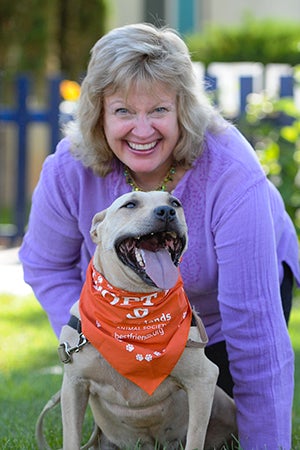Animal advocacy and no-kill 2025

This article appeared in Best Friends magazine. You can subscribe to the magazine by becoming a Best Friends member.
 Those familiar with Best Friends know that we are leading the charge to make the country no-kill by 2025. We’re working to reduce the killing of dogs and cats in shelters through many different avenues, including creating programs, providing grants and helping our partners across the nation save lives.
Those familiar with Best Friends know that we are leading the charge to make the country no-kill by 2025. We’re working to reduce the killing of dogs and cats in shelters through many different avenues, including creating programs, providing grants and helping our partners across the nation save lives.
To support it all, there’s also a team dedicated to advocacy. That team, along with lawmakers and community members, works on local no-kill initiatives focused on ending breed discrimination, eliminating puppy mills, and keeping community cats (stray and unowned felines) safe and out of shelters through trap-neuter-return (TNR) programs.
Here, Best Friends’ senior legislative attorney, Ledy Vankavage, explains why and how advocacy is a key part of the effort to make the 2025 goal a reality.
How does animal advocacy save dogs and cats?
Best Friends is focused on increasing adoptions of all breeds of dogs and cats, and on preventing them from entering - and being killed in - shelters. There are laws and ordinances that impede that work, so that’s what we look to change. We also help municipalities enact good laws that create safe and humane communities.
What specific kinds of advocacy does Best Friends focus on?
It might be advocating to change a local leash law that includes cats, which makes a community cat program impossible. Or passing a law to prevent pet stores from selling animals from mills, and encouraging them to offer shelter pets for adoption. Or eliminating a pet limit law and lobbying instead for a progressive nuisance law that targets the individuals creating problems.
We also continue to work on getting rid of breed-discriminatory legislation. We just came across a city in Texas that prevents the shelter from adopting out chows, pit bull terriers, Rottweilers or mixes of those breeds. Those sorts of things were more common in the 70s and 80s, but today there’s more knowledge about animal behavior and breeds. All dogs are individuals, and these are examples of things that need to be reevaluated and changed.
How can people make a difference with advocacy?
Find out what’s happening at your local shelter. How many animals are coming in and how many are going out alive? Talk to the people who run the shelter and find out what they want to do but can’t because of lack of funding, or if there’s an ordinance or law that’s prohibiting them from saving more lives.

Your elected officials need to know that their constituents care about issues affecting homeless pets in the community. Let them know by attending city council meetings and speaking up. During election years, ask the candidates to talk about their stand on the issues. You can also work on passing a no-kill resolution in your city and following up with a gap analysis to identify the changes needed to get there. (We provide a guide on how to do it here on the website.) There’s so much that active and concerned community members can do for animals.
Stay in touch with the Best Friends advocacy team and get involved in your community by signing up for action alerts.
Photos by Sarah Ause Kichas and Robert Stoetzel